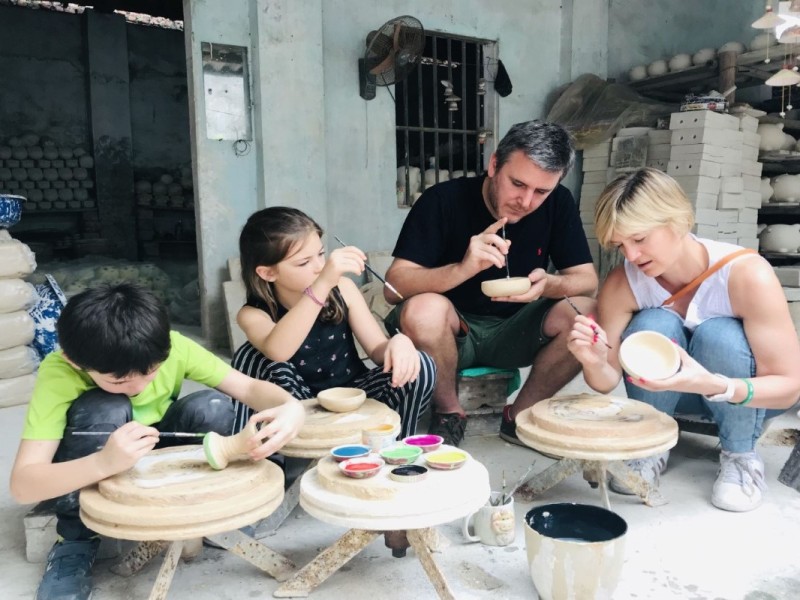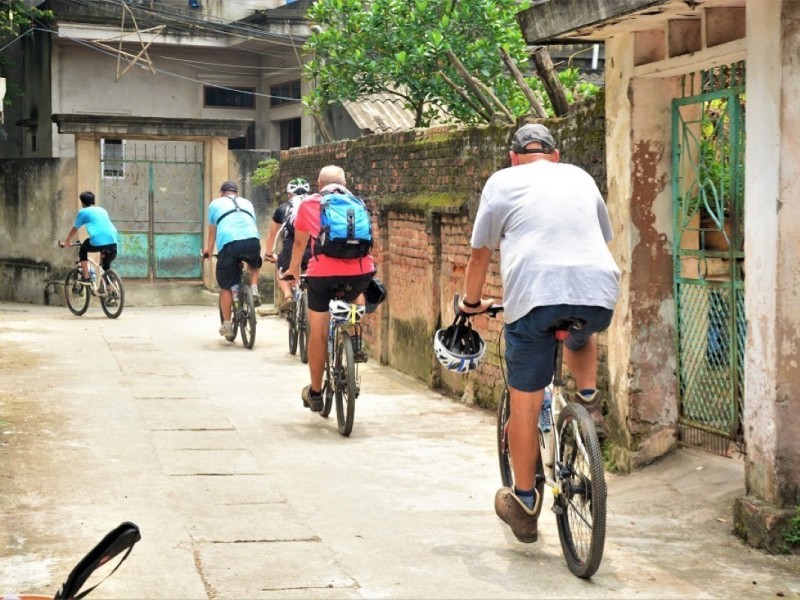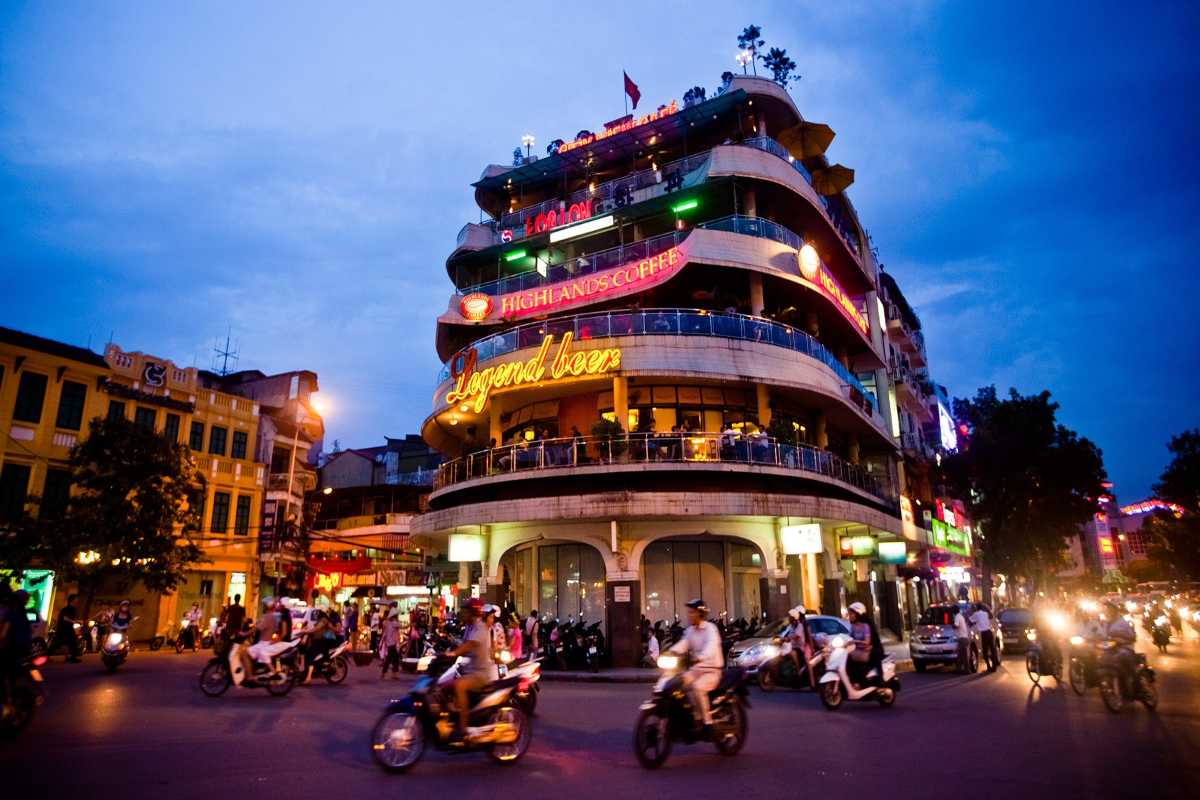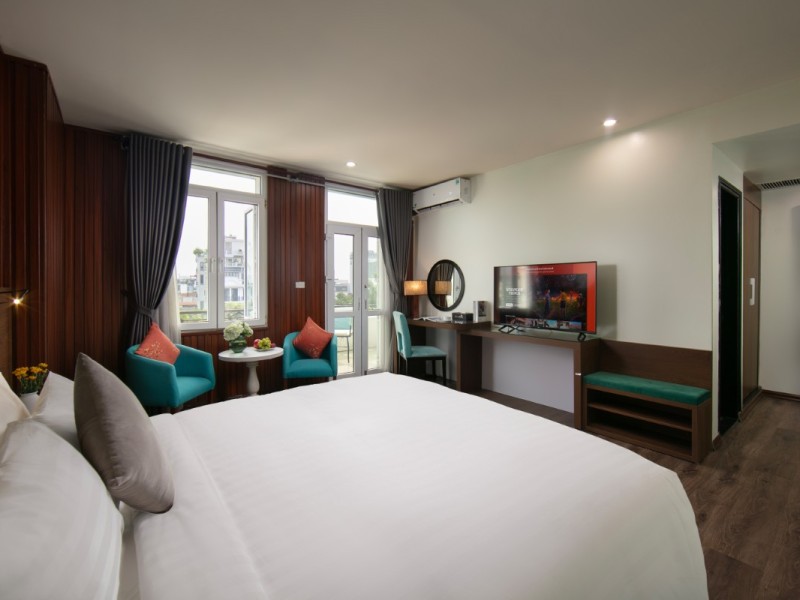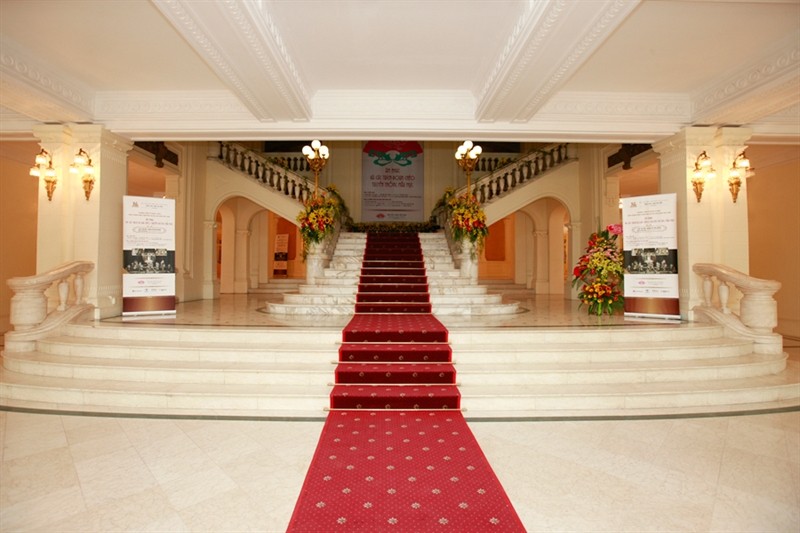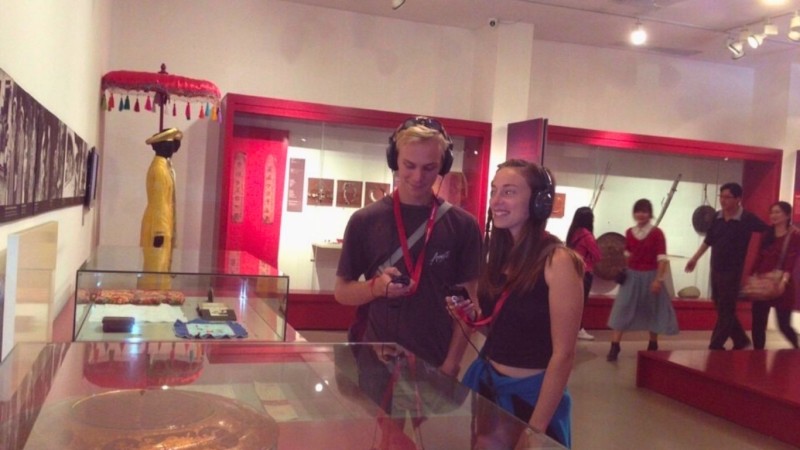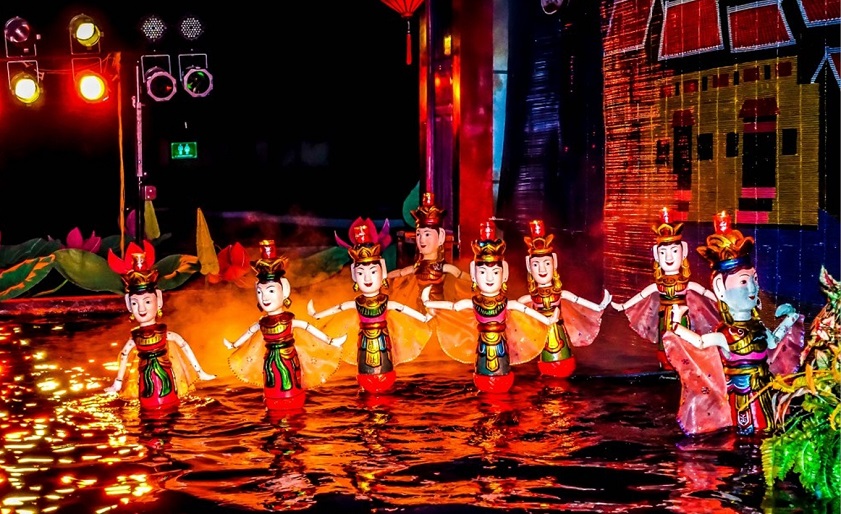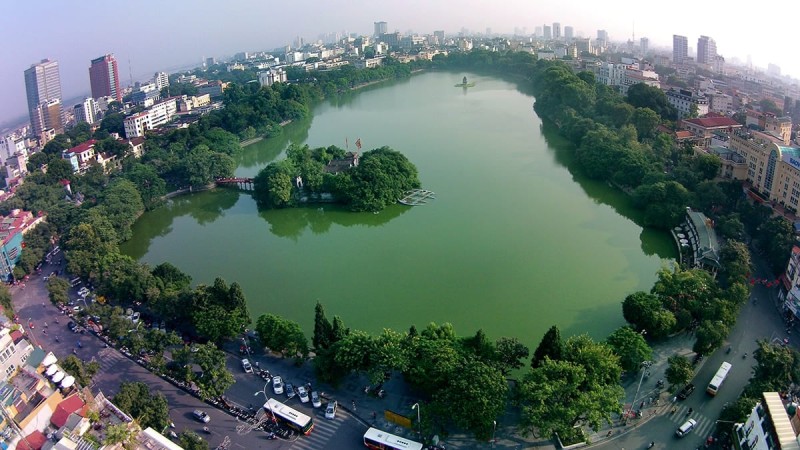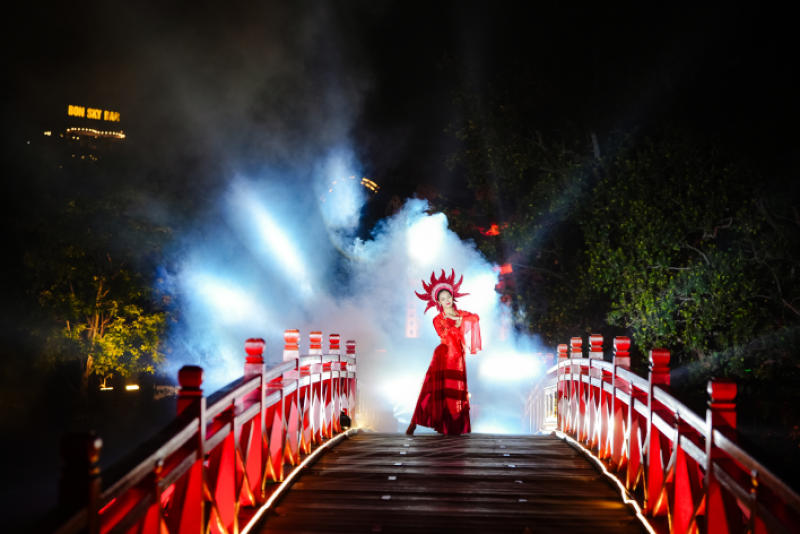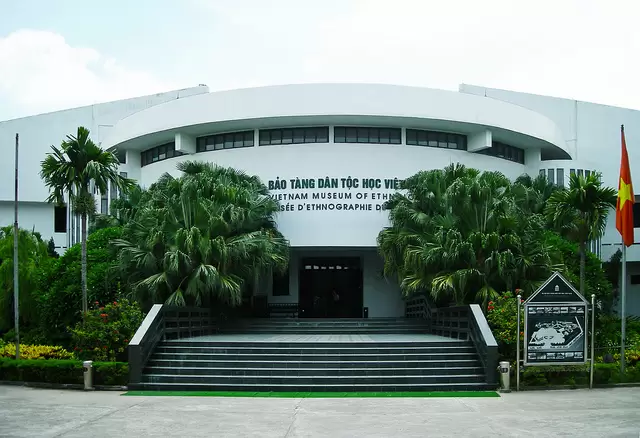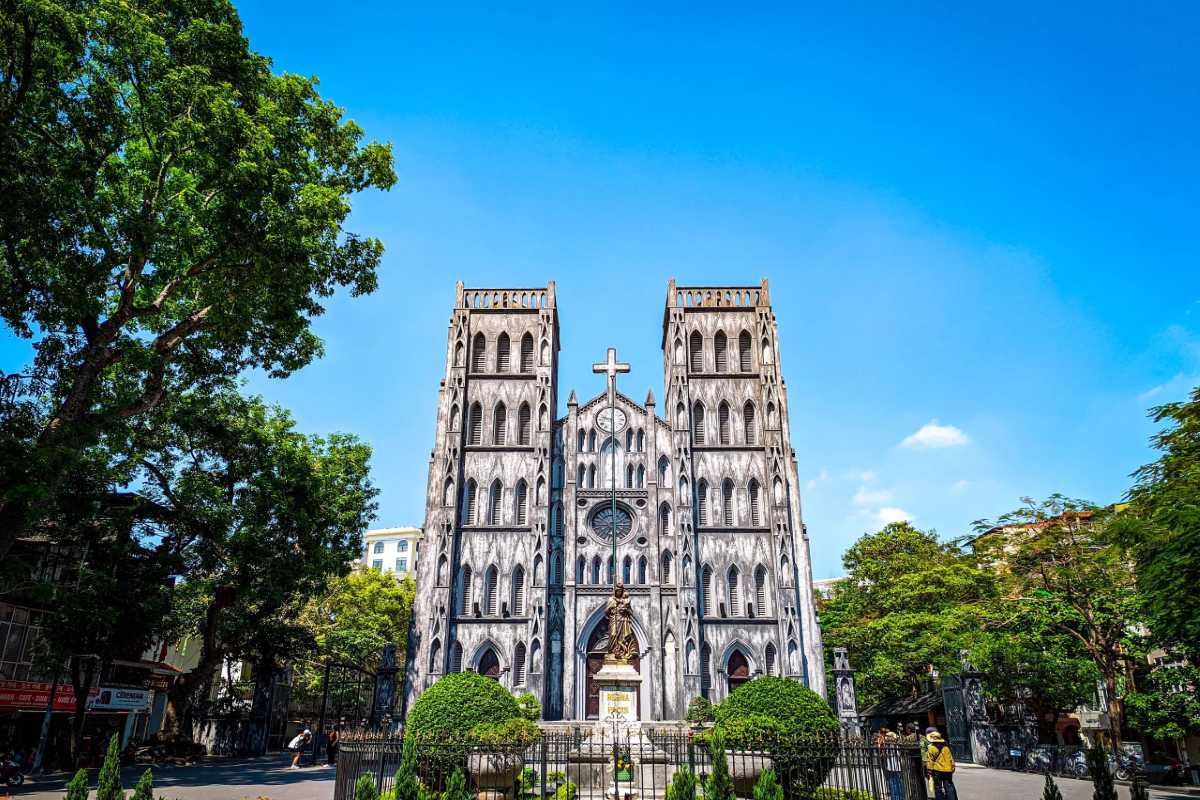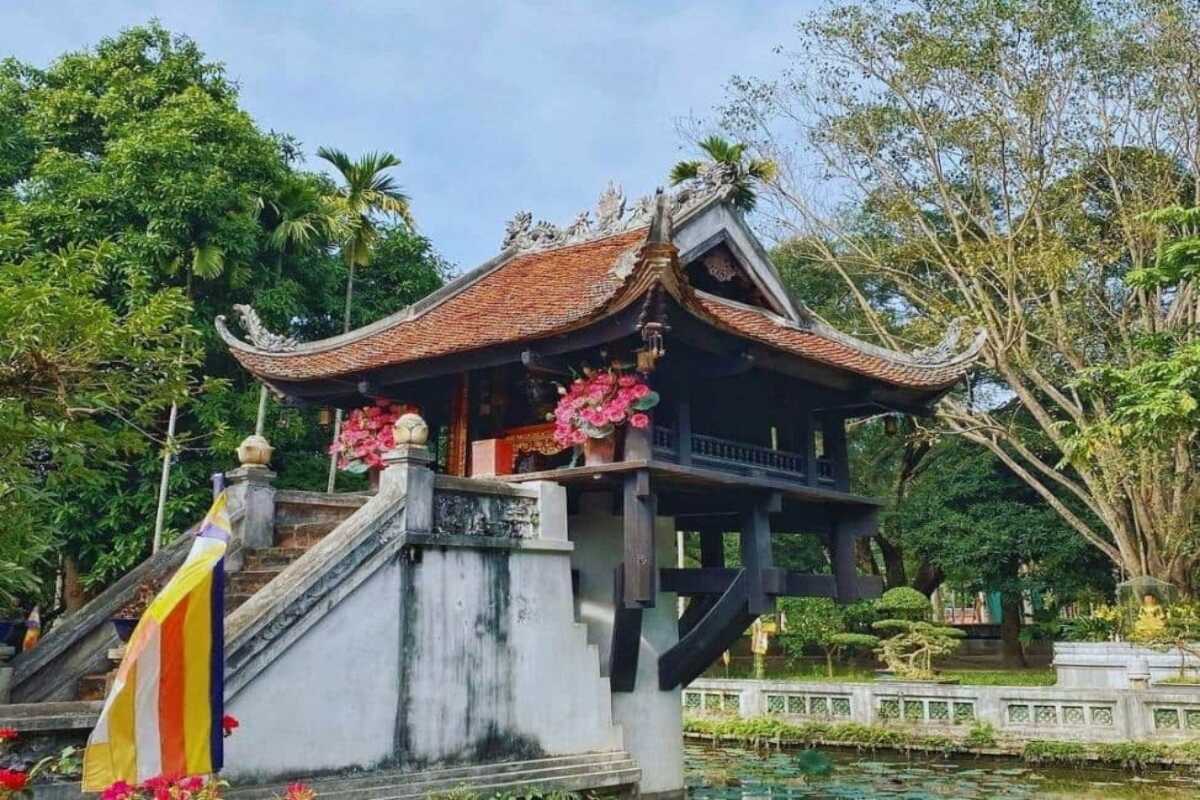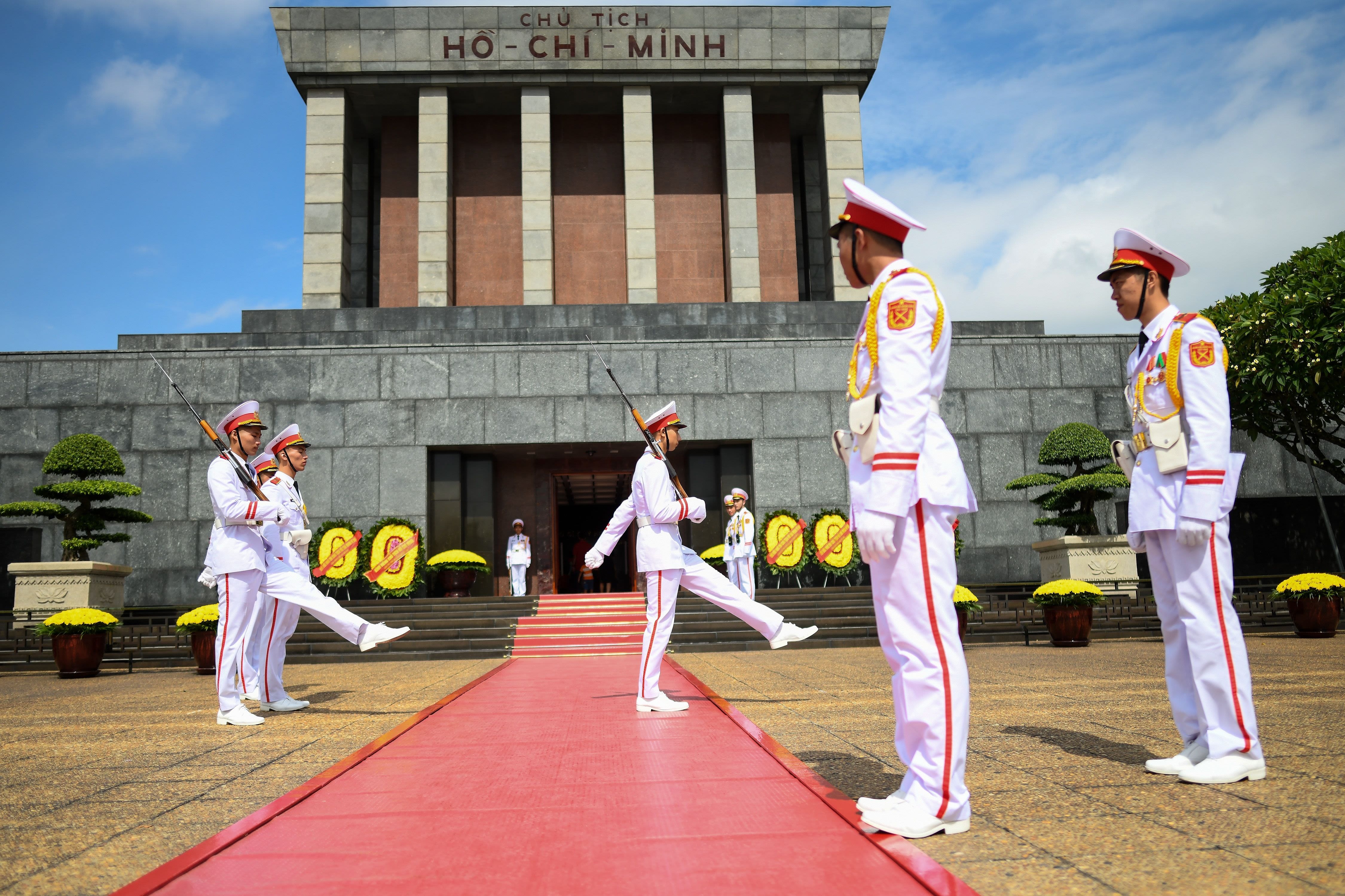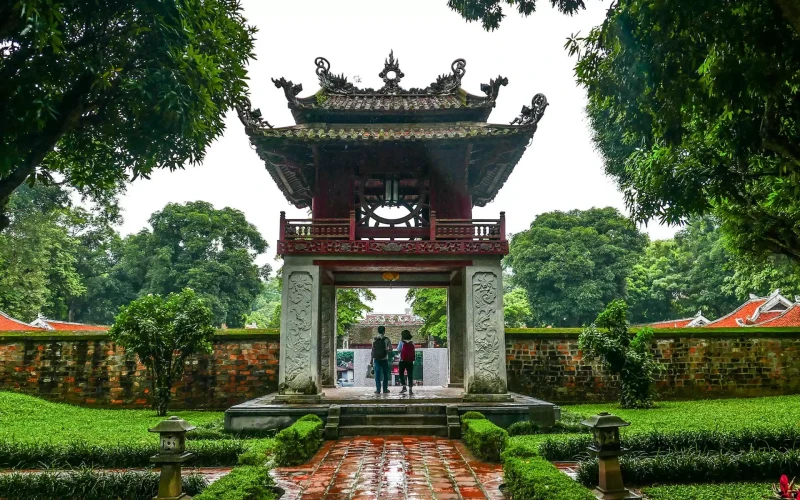Discover Hanoi Old Quarter: Best Attractions, Food, and Tours Guide
Hanoi Old Quarter offers a vibrant glimpse into Vietnam’s history and culture through its narrow streets, traditional tube houses, bustling markets, and authentic local cuisine. Visitors can explore historic landmarks, experience lively street food scenes, and enjoy unique cultural events in this lively urban district.
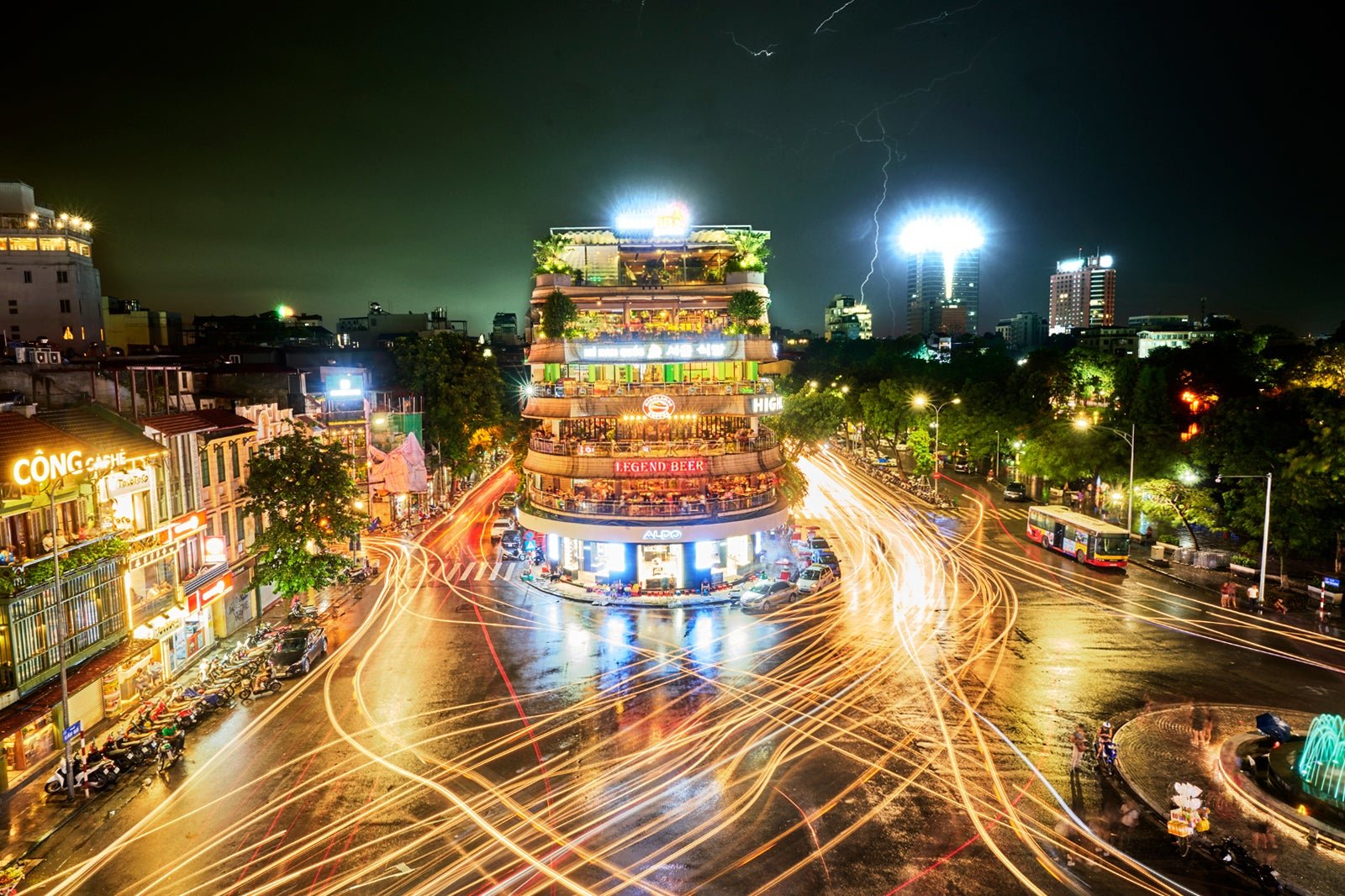
Introduction to Hanoi Old Quarter
The Hanoi Old Quarter is the vibrant heart of Vietnam’s capital city, where centuries of history and culture blend into a lively urban tapestry. Walking through its narrow, bustling streets, you’ll find a unique atmosphere filled with traditional markets, historic architecture, and local life that offers a glimpse into Vietnam’s rich heritage. This district is not just a place to see, but a place to experience the authentic spirit of Hanoi. From the sounds of street vendors to the scents of local cuisine, the Hanoi Old Quarter invites every visitor to dive deep into its cultural significance and timeless charm. Exploring this historic district will spark your curiosity and inspire a memorable journey into the past and present of Vietnam.
Plan your visit to the Hanoi Old Quarter to discover why it remains a beloved destination for travelers seeking a genuine cultural experience.
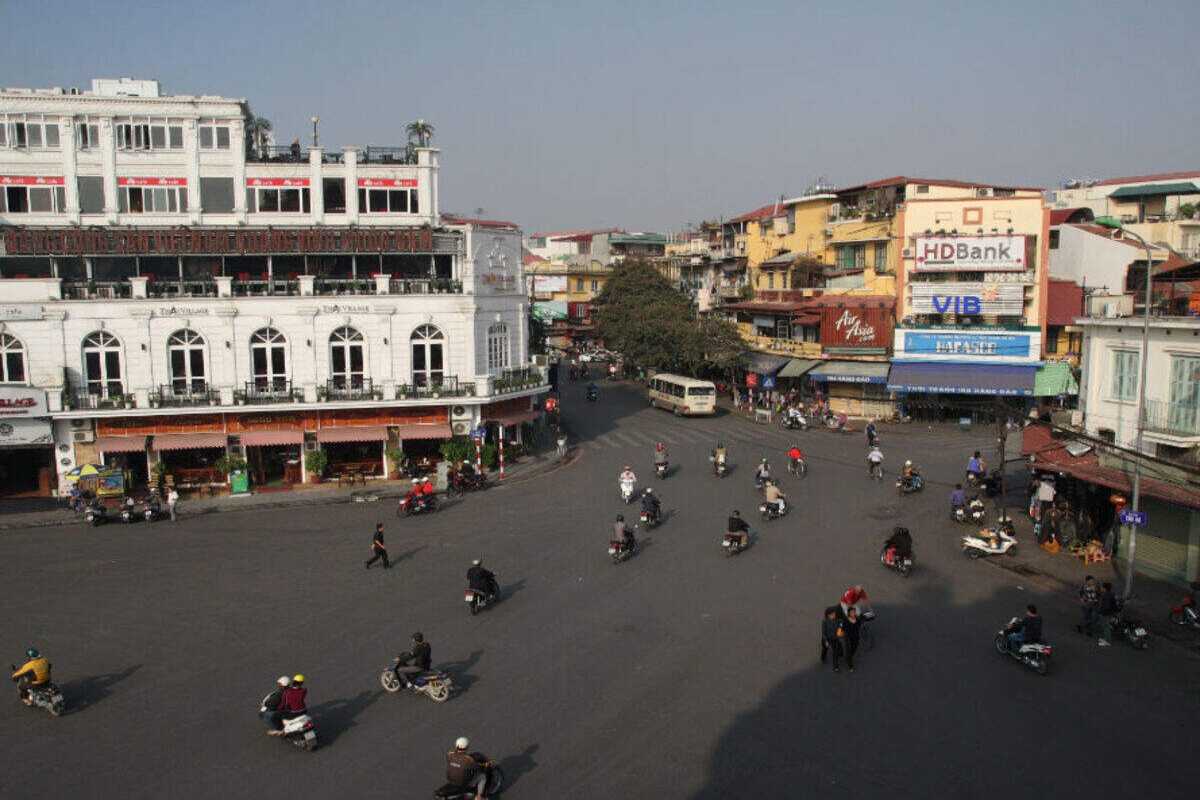
Overview and Significance
The Hanoi Old Quarter stands as a historic district that has preserved its cultural heritage for centuries. It is renowned for its vibrant streets where traditional crafts flourish, and ancient trade centers still echo in the narrow alleys. This area captures the essence of Vietnamese traditions and customs, making it a must-visit spot for anyone wanting to understand the soul of Hanoi. The district’s significance lies not only in its rich history but also in its dynamic street life, where colorful markets and artisan workshops thrive side by side. Its cultural heritage is visible in the architecture, local crafts, and the everyday lives of its residents, making the Hanoi Old Quarter a living museum that continues to evolve.
Immerse yourself in the lively ambiance of the Hanoi Old Quarter to experience a truly authentic glimpse of Vietnam’s cultural roots.
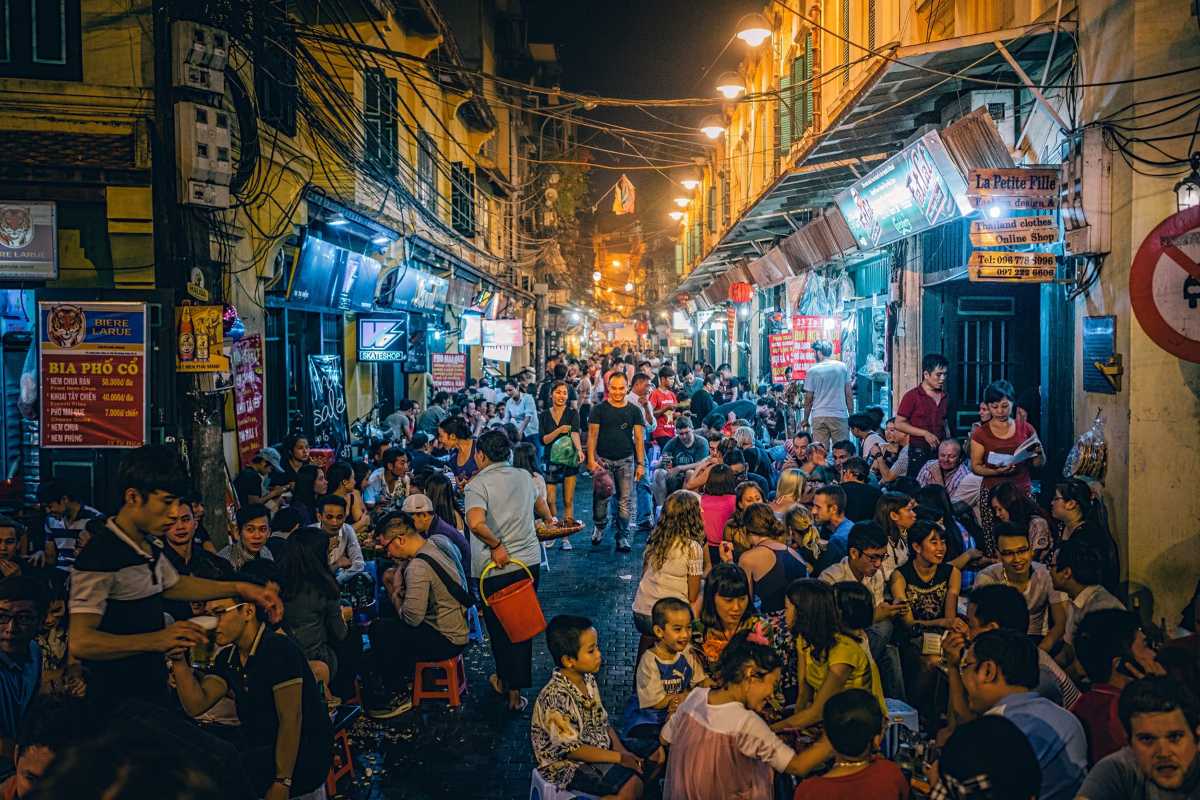
Historical Development and Origins
The Hanoi Old Quarter history dates back over a thousand years, tracing its origins to the time of the Ly Dynasty and Tran Dynasty. This historic district grew as a center of commerce and craftsmanship, evolving into a unique urban landscape shaped by a mix of cultural influences. The famous Formation of the 36 streets reflects the district’s specialization in specific trades, with each street historically dedicated to a particular craft or merchandise. Over time, French colonial architecture and Chinese cultural elements further influenced the Old Quarter’s character, making it a vibrant blend of East and West traditions. Understanding this evolution offers a deeper appreciation of the district’s rich heritage and the diverse forces that have shaped its streets and architecture.
Experience the historic charm of the Hanoi Old Quarter and explore the stories behind its legendary streets.
Formation of the 36 streets
The Formation of the 36 streets is a defining feature of the Hanoi Old Quarter, where each street traditionally specialized in a particular trade or craft. This historic naming system reflects the urban planning and economic structure that thrived for centuries. Examples include:
- Hang Bac: Known for silver goods
- Hang Gai: Famous for silk products
- Hang Ma: Traditional paper goods and ceremonial items
- Hang Dao: Leather and footwear
These streets were once home to artisan guilds that controlled trade and maintained quality, creating a vibrant marketplace where locals and merchants mingled. The specialized naming helped organize commerce and contributed to the district’s distinctive cultural identity.
Discover how these historic trades continue to influence the Hanoi Old Quarter today.
Influence of Vietnamese, Chinese, and French cultures
The cultural tapestry of the Hanoi Old Quarter is woven from diverse influences. Vietnamese culture forms the foundation, with traditional architecture, local customs, and artisan crafts deeply embedded in daily life. The influence of Chinese heritage is evident in certain architectural details, religious practices, and the district’s historical role as a trade hub connecting to regional markets. Later, the French colonial period introduced new architectural styles, including elegant colonial buildings, wide boulevards, and urban modernization efforts that still stand today. This fusion of cultures created a unique environment where East Asian traditions and Western colonial designs coexist, enriching the Old Quarter’s urban fabric and cultural life.
Explore the cultural fusion that makes the Hanoi Old Quarter a living museum of history and tradition.
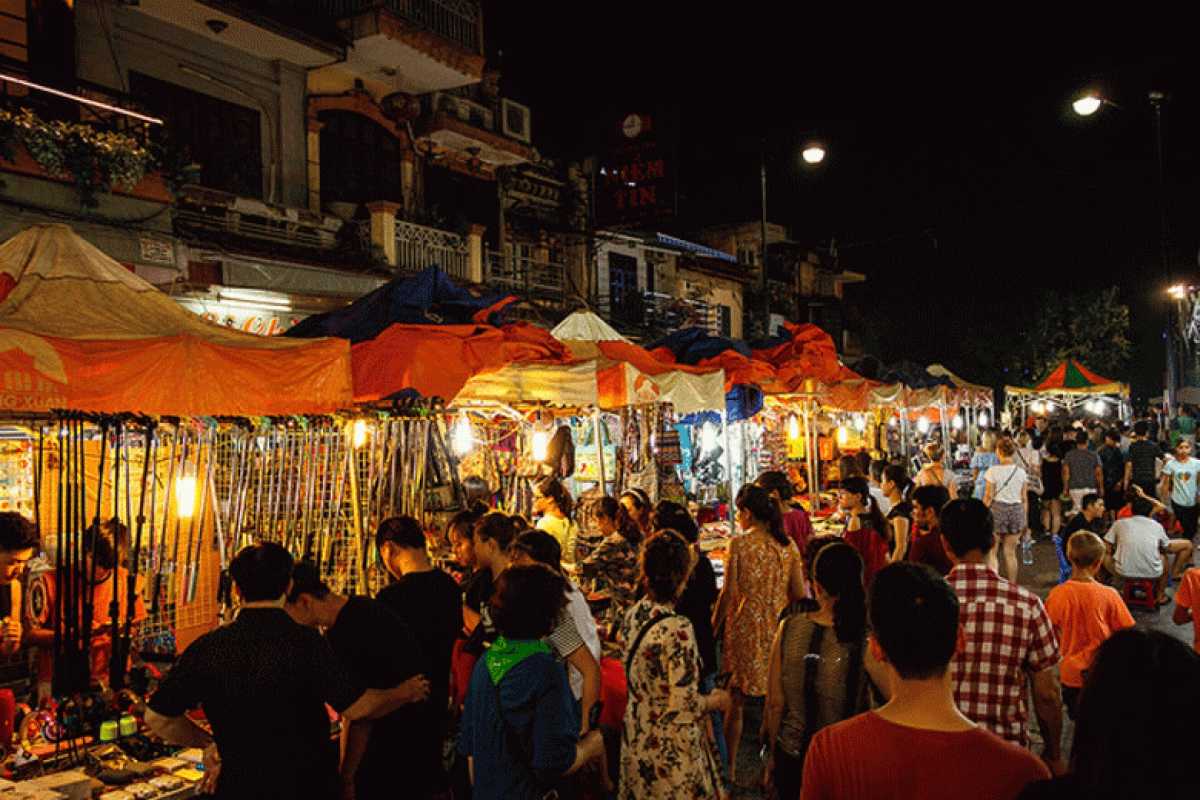
Unique Features and Urban Layout
The Hanoi Old Quarter is renowned for its distinctive urban layout and architectural style that sets it apart from other parts of Vietnam. The district’s narrow streets weave tightly together, creating a dense and lively urban environment. One of the most notable architectural features here is the famous tube houses architecture, characterized by long, narrow homes built deep into the city blocks. These houses were designed to maximize limited space while serving mixed residential and commercial purposes. Additionally, many streets are named according to the traditional trades that flourished there, revealing the rich economic and cultural history embedded in the urban fabric. This combination of unique architectural design and historic street naming offers a captivating glimpse into Hanoi Old Quarter’s heritage and way of life.
Explore the Hanoi Old Quarter to see firsthand how this traditional urban design continues to shape the neighborhood’s vibrant character.
Tube houses architecture
The tube houses architecture in the Hanoi Old Quarter is a remarkable response to the city’s limited space and urban density. These houses are typically narrow at the front—sometimes only a few meters wide—but extend deeply inward, creating long, slender buildings. This design allowed merchants to use the front area as shops while living in the rear and upper floors. Key features include:
- Narrow frontage: Maximizes use of scarce street-facing space
- Deep interior: Provides ample living space behind the storefront
- Mixed-use function: Combines residential and commercial needs
- Colonial influence: Some houses incorporate French architectural details
This architectural style remains a vital part of Hanoi’s cultural heritage, illustrating how traditional design meets practical urban needs.
Discover the charm of these narrow urban homes as you walk through the streets of the Hanoi Old Quarter.
Traditional street naming based on trades
Many streets in the Hanoi Old Quarter carry names that reflect the traditional trades and guilds that once dominated their commerce. This naming system serves as a cultural map, preserving the district’s economic heritage. Examples include:
- Hang Bac (Silver Street): Known for silver jewelry and crafts
- Hang Gai (Silk Street): Famous for silk weaving and textiles
- Hang Ma (Paper Goods Street): Specializes in ceremonial paper products
- Hang Dao (Leather Street): Known for shoes and leather products
These names reveal the strong presence of artisan guilds that regulated production and trade, maintaining quality and tradition. Understanding this system offers insight into the vibrant cultural history woven into the Hanoi Old Quarter’s streets.
Take time to explore these trade-named streets to appreciate the rich economic legacy they represent.

Historical and Cultural Insights
The Hanoi Old Quarter is a living testament to centuries of history and culture. Its identity has been shaped by key historical milestones, from the Ly Dynasty and Tran Dynasty through the French colonial period. This district’s rich cultural heritage is preserved through traditional crafts, artisan guilds, and local festivals that continue to enliven the streets. However, the Old Quarter also faces challenges related to modernization and tourism impact, prompting ongoing heritage restoration and community conservation efforts. Understanding this deep historical and cultural context helps visitors appreciate the unique character and resilience of the Hanoi Old Quarter.
Explore the vibrant history and cultural fabric of the Hanoi Old Quarter to enrich your travel experience.

Key Historical Events and Milestones
The Hanoi Old Quarter history unfolds through several significant phases. During the Ly Dynasty and Tran Dynasty, the district developed into a thriving urban center with planned streets and artisan guilds. Later, the French colonial period introduced new architectural styles and urban modernization, leaving a lasting mark on the cityscape. These events influenced the district’s evolution, from its historic trade routes to its architectural heritage and cultural shifts. This timeline provides valuable insight into how the Old Quarter became the culturally rich area it is today.
Delve into the key historical phases that shaped the Hanoi Old Quarter to gain a deeper understanding of its legacy.
Role during Ly and Tran Dynasties
The Ly Dynasty and Tran Dynasty laid the foundational urban and cultural framework for the Hanoi Old Quarter. During this medieval period, urban planning took shape with organized streets supporting commerce and governance. Artisan guilds flourished, fostering craftsmanship that defined the district’s identity. Early commerce and cultural roots established in these dynasties continue to influence the area’s traditional practices and community structure.
- Medieval Hanoi developed as a political and economic center.
- Dynastic urban planning introduced the grid layout of streets.
- Artisan guilds regulated trade and preserved quality standards.
Understanding these roots reveals the deep heritage embedded in the Hanoi Old Quarter.
Impact of French colonial period
The French colonial period brought architectural, social, and cultural transformations to the Hanoi Old Quarter. Colonial architecture introduced elegant facades and wider boulevards, blending with traditional Vietnamese urban forms. This period also spurred urban modernization, affecting social dynamics and infrastructure. The fusion of styles and cultural shifts from this era remain visible in heritage buildings and continue to influence the district’s evolving character.
- Introduction of French-style buildings and urban planning.
- Cultural fusion evident in architecture and public spaces.
- Social changes that influenced community life and commerce.
Experience the legacy of the French colonial period while exploring the unique charm of the Hanoi Old Quarter.
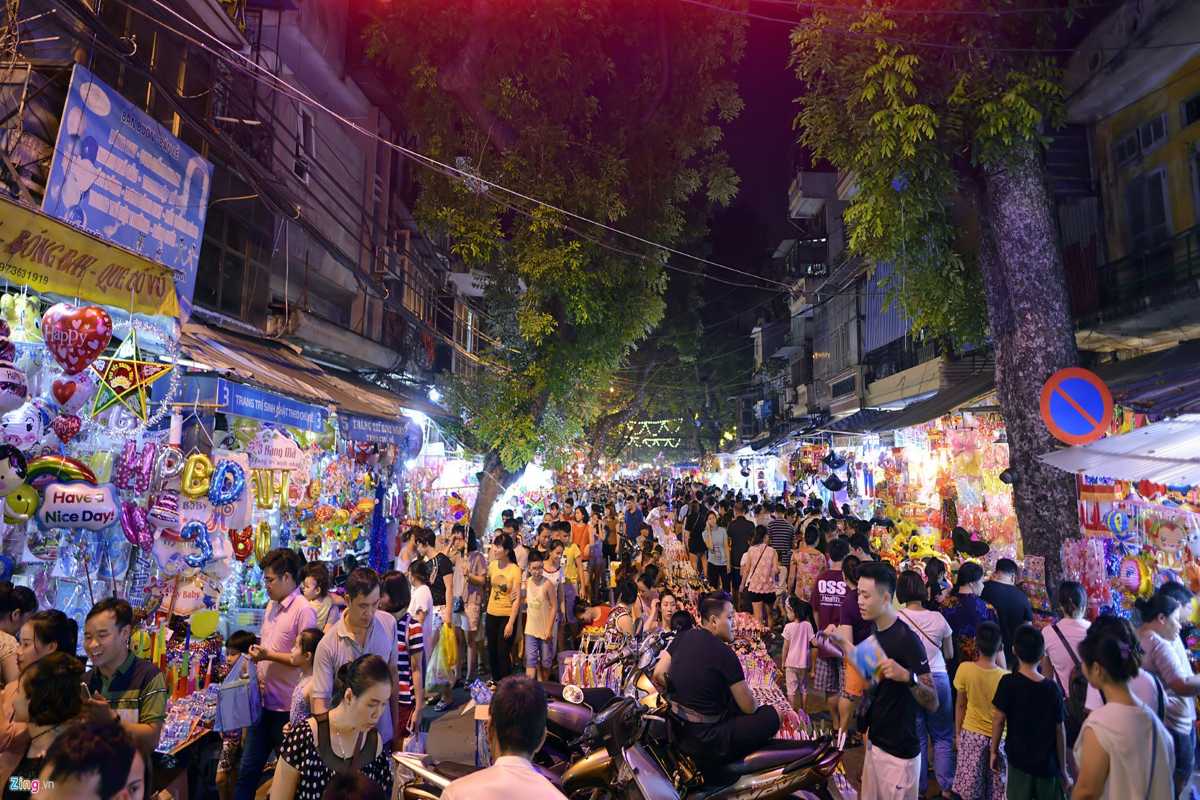
Cultural Traditions and Heritage
The Hanoi Old Quarter is alive with cultural traditions that have been passed down through generations. Its vibrant artisan guilds and traditional crafts reflect centuries of skilled workmanship, keeping local heritage alive. The district also hosts lively festivals and celebrations that mark the cultural calendar and invite community participation. These events and crafts are not only a testament to the past but also a living, breathing part of daily life in the Old Quarter, connecting visitors with Vietnam’s rich cultural fabric.
Immerse yourself in the cultural heart of the Hanoi Old Quarter to experience timeless traditions and festive celebrations.
Traditional crafts and artisan guilds
Traditional crafts and artisan guilds have long supported the economy and culture of the Hanoi Old Quarter. These guilds regulate craftsmanship and preserve quality in trades that remain vital today. Examples include:
- Silk weaving: Producing exquisite fabrics used in traditional clothing
- Pottery: Creating functional and decorative ceramics rooted in ancient techniques
- Wood carving: Crafting intricate designs for temples, homes, and furniture
Many artisan workshops remain active, offering visitors a chance to observe the craftsmanship and purchase handmade goods that represent the area’s cultural economy.
Discover the enduring legacy of these artisan trades in the Hanoi Old Quarter.
Local festivals and celebrations in the Old Quarter
The Hanoi Old Quarter hosts several important local festivals that reflect its vibrant cultural life. These celebrations draw locals and visitors alike to partake in centuries-old traditions, marked by music, dance, and communal rituals. Key festivals include:
- Tet Festival: The Vietnamese Lunar New Year, featuring family reunions, traditional foods, and festive decorations
- Mid-Autumn Festival: Known for lantern parades, folk performances, and mooncakes
These festivals showcase traditional music, colorful lanterns, and folk arts, providing a festive atmosphere that highlights the Old Quarter’s communal spirit and cultural richness.
Plan your visit to coincide with these festivals to witness the Hanoi Old Quarter’s vibrant cultural celebrations.

Preservation and Conservation Efforts
The Hanoi Old Quarter benefits from various heritage preservation initiatives aimed at safeguarding its historic character amid rapid urbanization. These efforts involve restoring ancient buildings, managing tourism impact, and promoting sustainable practices. Local communities play an essential role in cultural preservation through activism and education, ensuring traditions remain vibrant. However, challenges such as modernization pressures and over-tourism threaten the delicate balance between progress and heritage conservation. Understanding these efforts and challenges highlights the ongoing commitment to maintaining the unique identity of the Hanoi Old Quarter for future generations.
Learn more about how preservation projects and community involvement keep the Hanoi Old Quarter culturally alive.
Heritage restoration projects
Several key heritage restoration projects focus on conserving the Hanoi Old Quarter’s historic streets and buildings. These projects often receive support from UNESCO and other heritage organizations. Efforts include:
- Structural repairs and facade restorations to maintain architectural integrity
- Preservation of traditional urban layouts and streetscapes
- Funding initiatives promoting heritage conservation education
These restoration techniques are vital to maintaining the authentic look and feel of the Old Quarter while accommodating necessary urban renewal.
Discover the ongoing work that preserves the historic charm of the Hanoi Old Quarter.
Community involvement in cultural preservation
Local communities actively contribute to preserving the cultural heritage of the Hanoi Old Quarter. Various grassroots groups and cultural education programs work to keep traditional crafts and customs alive. Initiatives include:
- Artisan support programs fostering traditional skills
- Community-led cultural festivals and workshops
- Heritage awareness campaigns promoting cultural pride
These efforts ensure that preservation is not just about buildings, but also about sustaining living traditions and local identity.
Experience the rich cultural pride maintained by the people of the Hanoi Old Quarter.
Challenges of modernization and tourism impact
The Hanoi Old Quarter faces significant challenges balancing development and heritage preservation. Urban growth and increased tourism bring pressures such as:
- Over-tourism causing congestion and wear on historic sites
- Modern construction threatening traditional urban fabric
- Cultural dilution from commercialized tourism activities
Sustainable tourism and heritage management strategies are critical to addressing these issues, helping to protect the district’s cultural sustainability for visitors and residents alike.
Understand the complex dynamics shaping the future of the Hanoi Old Quarter.

Practical Travel Information
The Hanoi Old Quarter is easily accessible and offers various transport options to suit every traveler’s needs. Whether arriving from Noi Bai International Airport or navigating the city’s public transport, visitors can find convenient ways to reach this historic district. Understanding the best times to visit, entry fees, and accessibility features will help you plan a smooth and enjoyable trip. With clear guidance on transportation, weather, and accessibility, you can maximize your comfort and focus on immersing yourself in the rich culture of the Hanoi Old Quarter.
Plan your journey to the Hanoi Old Quarter with confidence using these practical travel tips.
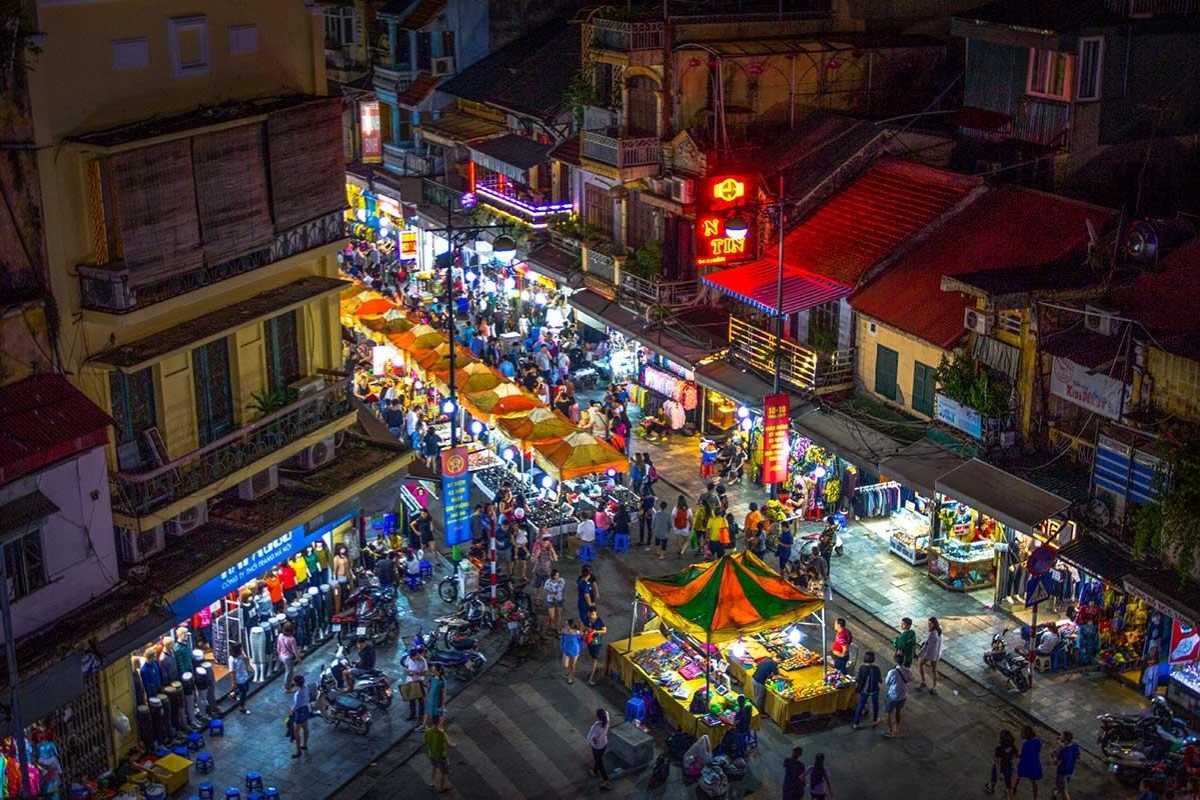
How to Get There
Getting to the Hanoi Old Quarter is straightforward, with several options from the main airport and around the city. Whether you prefer taxis, shuttle buses, or public transit, knowing your choices helps save time and money. Here are the main transport options to consider when planning your arrival and daily travels within Hanoi.
Choose the best way to get to the Hanoi Old Quarter based on your budget and schedule.
Transportation from Noi Bai International Airport
Travelers arriving at Noi Bai International Airport have multiple transfer options to reach the Hanoi Old Quarter:
- Airport Taxi: Convenient and direct, typically taking 30–45 minutes; fares range from $15–$25.
- Private Car Transfer: Pre-booked services offering comfort and fixed rates.
- Shuttle Bus: Economical choice with shared routes to city center; travel time around 45–60 minutes.
Each option balances cost, convenience, and comfort, allowing you to select what fits your needs best.
Plan your airport transfer to the Hanoi Old Quarter carefully to start your trip hassle-free.
Public transport options within Hanoi
Hanoi’s public transport system includes several bus routes serving the Hanoi Old Quarter area:
- Bus lines 07, 09, 36, and 45 connect key city points with the Old Quarter.
- Tickets are affordable, usually under $1 per ride.
- Be prepared for busy buses and limited English signage; apps or maps help navigate routes.
Using local buses offers an authentic experience and budget-friendly travel option.
Explore the Hanoi Old Quarter efficiently with these public transport tips.
Walking routes and pedestrian access
The Hanoi Old Quarter is best explored on foot due to its compact size and narrow streets. Walking routes are pedestrian-friendly but watch for motorbikes and busy sidewalks. Tips for safe navigation include:
- Use main pedestrian streets like Hang Gai and Hang Dao for easier walking.
- Carry a map or download a walking app for orientation.
- Consider cyclo rides for a relaxed tour of busy areas.
Walking lets you soak in the local atmosphere at your own pace.
Enjoy the charm of the Hanoi Old Quarter through its pedestrian-friendly streets.
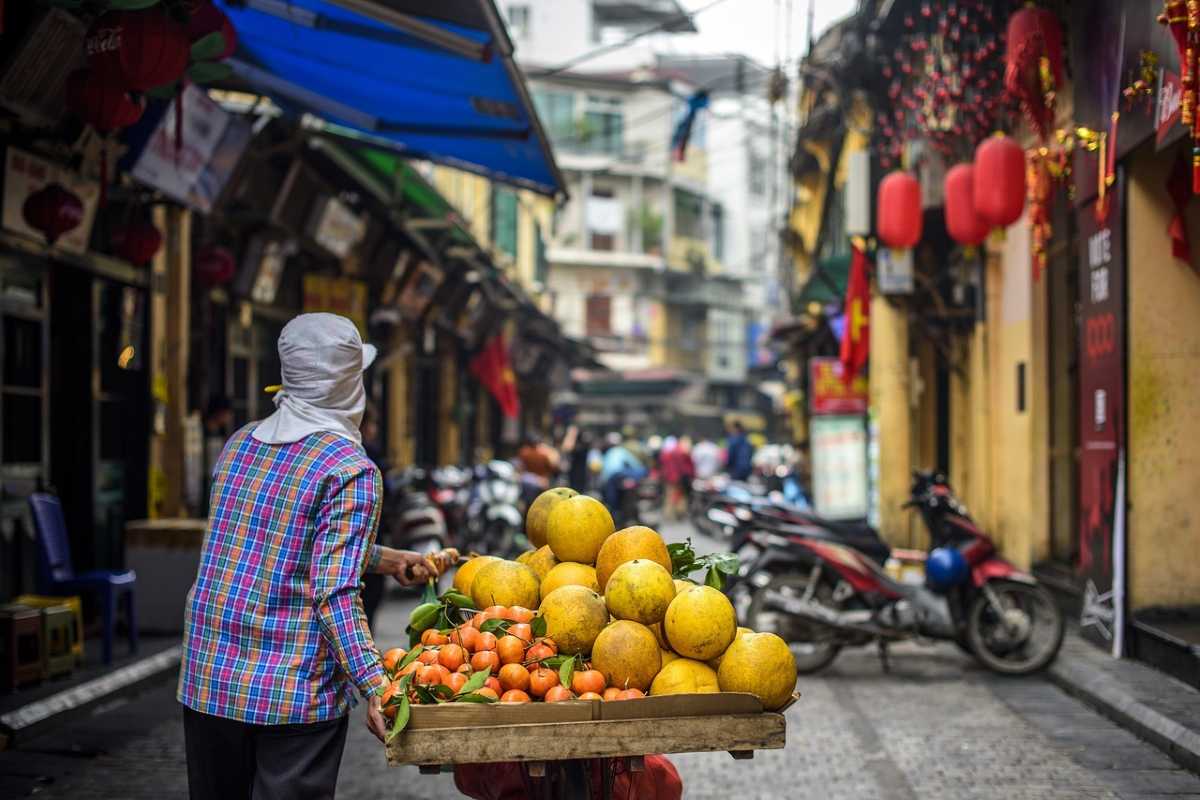
Best Time to Visit
Choosing the best time to visit Hanoi Old Quarter can greatly enhance your travel experience. The district’s climate varies throughout the year, with distinct seasons affecting comfort and activities. Understanding seasonal weather and tourism peaks will help you plan your trip to avoid overcrowding and unfavorable conditions. Whether you prefer lively festivals or quiet streets, knowing when to visit allows you to enjoy the authentic charm of the Hanoi Old Quarter at your own pace.
Discover when to explore the Hanoi Old Quarter for the most comfortable and enriching visit.
Seasonal weather considerations
Hanoi experiences four distinct seasons, each influencing your visit to the Hanoi Old Quarter differently:
- Spring (March to April): Mild temperatures and blossoming flowers make this an ideal time for walking tours.
- Summer (May to August): Hot and humid with heavy rains during the monsoon season; expect high humidity and occasional flooding.
- Autumn (September to November): Pleasant weather with cooler temperatures and less rain, considered the best overall season.
- Winter (December to February): Cooler temperatures with occasional cold snaps; generally dry and suitable for sightseeing.
Being aware of these conditions helps you pack appropriately and plan activities for maximum comfort.
Prepare for your visit by understanding the seasonal weather in Hanoi.
Peak tourism periods and festivals
The Hanoi Old Quarter sees its busiest visitor periods during major festivals and holiday seasons, which offer rich cultural experiences but also crowds:
- Tet Festival (Vietnamese Lunar New Year, usually late January or February): The most important celebration with vibrant street decorations and traditional events.
- Mid-Autumn Festival (September or October): Known for colorful lantern displays and family gatherings.
- Summer holidays (June to August): Increased tourist numbers, especially families on vacation.
Planning your trip around these periods allows you to either participate in cultural festivities or avoid peak crowds.
Consider these tourism peaks to make the most of your visit to the Hanoi Old Quarter.
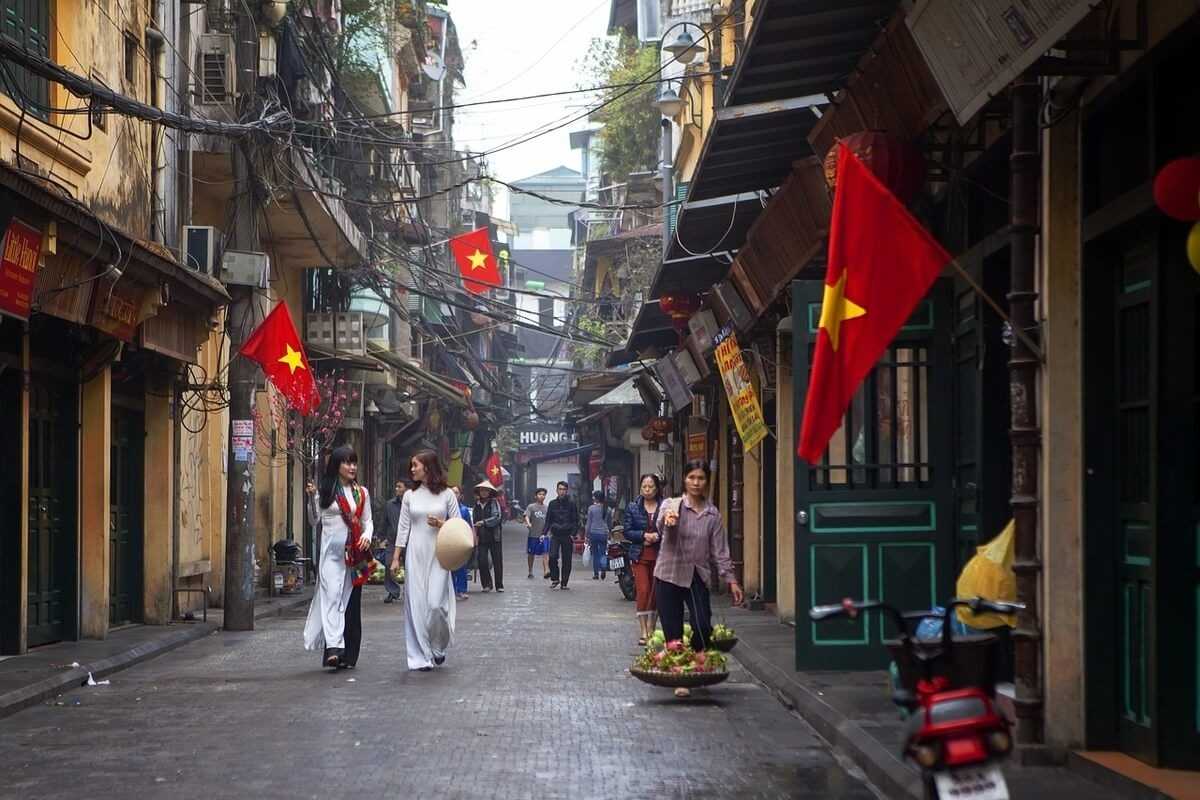
Entry Fees and Accessibility
Visitors to the Hanoi Old Quarter can expect generally free access to the district’s lively streets, but some museums, temples, and cultural sites charge modest entry fees. Understanding these costs in advance helps with budgeting. Additionally, accessibility varies across the area, with some facilities accommodating travelers with disabilities through ramps and other support, while older streets and buildings may present challenges. Knowing what to expect allows all visitors to plan a comfortable and enjoyable visit to the Hanoi Old Quarter.
Prepare for your trip by reviewing entry fees and accessibility options in the Hanoi Old Quarter.
General free access to the district
The streets of the Hanoi Old Quarter are open to the public free of charge. You can freely explore the bustling markets, historic lanes, and vibrant local life without any entrance fees. This accessibility makes it easy for travelers to wander, shop, and discover the district’s charm at their own pace.
Enjoy the open, pedestrian-friendly nature of the Hanoi Old Quarter with no entry costs.
Fees for museums, temples, and cultural sites
While the district itself is free to explore, some cultural sites and museums charge entry fees to support their maintenance. Typical prices include:
- Museum of the Vietnamese Revolution: around $1–$2
- Bach Ma Temple: free entry, donations accepted
- Thang Long Water Puppet Theater: ticket prices vary, generally $5–$10
- Other small museums: usually under $2
These fees contribute to preserving the heritage and ensuring quality visitor experiences.
Budget accordingly to visit the diverse cultural attractions within the Hanoi Old Quarter.
Accessibility for travelers with disabilities
Accessibility in the Hanoi Old Quarter can be mixed due to its historic layout and narrow streets. Facilities and support vary, but key points include:
- Some museums and theaters provide ramps and elevators.
- Wheelchair access may be limited in older buildings and narrow alleys.
- Public transport options include accessible taxis and ride-hailing services.
- Assistance is available at larger cultural venues upon request.
Planning ahead ensures a comfortable visit for travelers with disabilities to the Hanoi Old Quarter.

Top Attractions Within Hanoi Old Quarter
The Hanoi Old Quarter is home to some of the city’s most iconic landmarks and cultural highlights. From its historic streets and bustling markets to ancient temples and unique museums, this district offers a rich, immersive experience that captures the heart of Vietnamese heritage. Exploring these top attractions allows travelers to dive into vibrant local life, admire traditional architecture, and enjoy performances that celebrate the district’s cultural legacy.
Discover the must-see places within the Hanoi Old Quarter to make the most of your visit.

Historic Streets and Markets
The historic streets Hanoi Old Quarter are alive with color, sound, and activity. These traditional thoroughfares offer a sensory feast where you can shop for artisan products, sample street food, and engage with local vendors. The markets pulse with energy, offering everything from silk textiles to handicrafts. Here are some standout locations:
- Hang Gai Street: Famous for its silk shops and high-quality textiles.
- Dong Xuan Market: The largest market in the Old Quarter, known for its variety of goods and lively atmosphere.
These areas provide an authentic glimpse into the daily life and commerce of the Hanoi Old Quarter.
Plan your walk through these vibrant streets and markets to experience the true local culture.
Hang Gai Street (Silk Street)
Hang Gai Street has long been known as the traditional hub for silk trading in the Hanoi Old Quarter. Shoppers will find:
- A wide range of silk products, including scarves, garments, and accessories.
- Artisan silk crafted using traditional techniques.
- Shops that offer custom tailoring and bespoke silk garments.
- Tips for negotiating prices and identifying quality silk.
This street is a paradise for those seeking authentic Vietnamese silk and traditional crafts.
Explore Hang Gai Street for an unforgettable silk shopping experience.
Dong Xuan Market
Dong Xuan Market is the largest and busiest market in the Hanoi Old Quarter, offering an extensive variety of goods:
- Food stalls selling local Vietnamese dishes and fresh produce.
- Sections dedicated to textiles, handicrafts, souvenirs, and household items.
- Bustling atmosphere filled with locals and tourists alike.
- Tips for navigating crowded aisles and bargaining effectively.
This market is an essential stop for anyone wanting to experience the vibrant commerce of the Old Quarter.
Visit Dong Xuan Market to immerse yourself in authentic local market life.
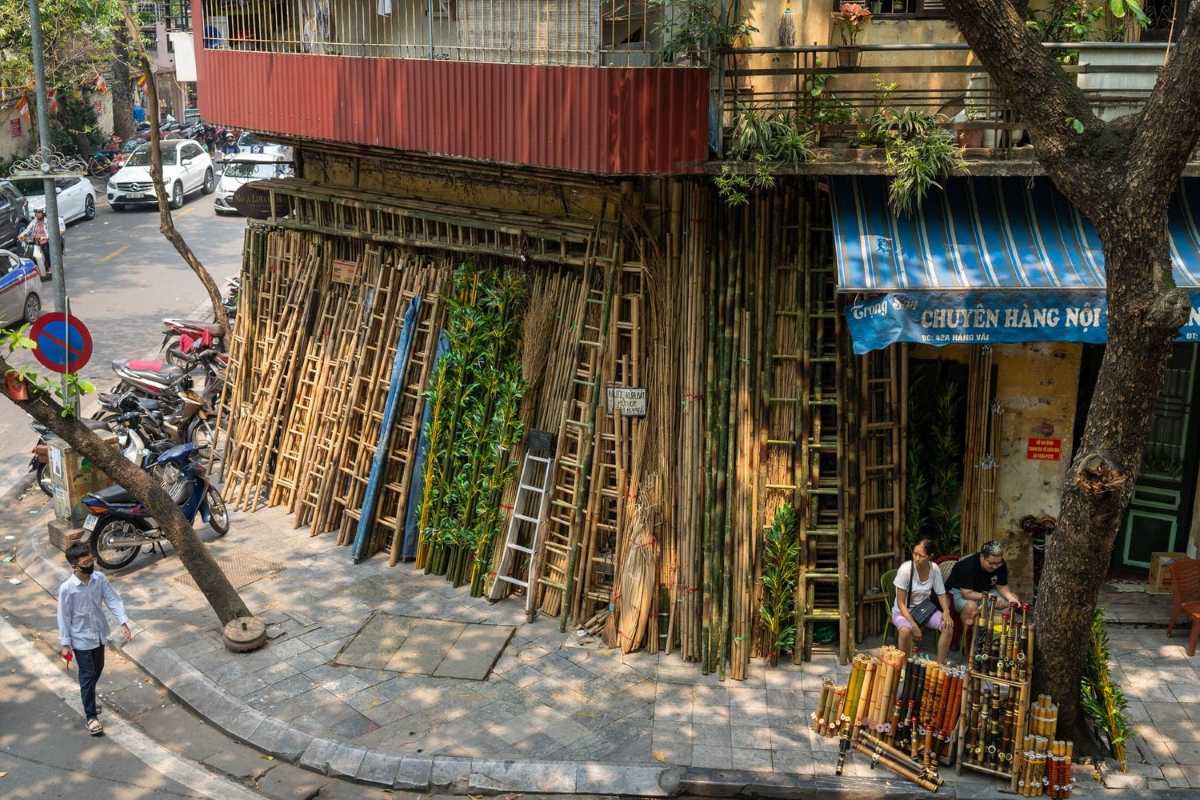
Notable Temples and Pagodas
The Hanoi Old Quarter is home to several notable temples and pagodas that reflect the city’s rich religious and spiritual heritage. These sacred sites offer visitors a chance to appreciate ancient architecture and witness traditional religious practices that have endured for centuries. Exploring these landmarks deepens your understanding of Vietnamese culture and spirituality.
Discover the spiritual heart of the Hanoi Old Quarter by visiting its iconic temples and pagodas.
Bach Ma Temple
Bach Ma Temple is one of the oldest temples in the Hanoi Old Quarter, dating back to the 11th century. Known as the "Temple of the White Horse," it honors a legendary white horse that aided the Ly Dynasty in battle. Key features include:
- Traditional Vietnamese temple architecture with intricate carvings
- A central altar dedicated to the white horse spirit
- Peaceful courtyard offering a place for quiet reflection
- Accessibility tips and best visiting times
This temple provides a glimpse into the spiritual traditions and historic roots of Hanoi.
Explore the historic and spiritual significance of Bach Ma Temple during your visit.
Quan Thanh Temple (nearby)
Located just outside the Hanoi Old Quarter, Quan Thanh Temple is a major Taoist temple dedicated to the deity Tran Vu. It is renowned for:
- Its striking bronze statue of Tran Vu, a symbol of protection
- Beautiful traditional architecture featuring curved roofs and dragon motifs
- Cultural festivals and ceremonies celebrated throughout the year
Visiting Quan Thanh Temple offers insight into the religious diversity and cultural richness surrounding the Old Quarter.
Add Quan Thanh Temple to your itinerary to experience a key spiritual site near the Hanoi Old Quarter.

Architectural Highlights
The Hanoi Old Quarter is distinguished by its unique blend of architectural styles that tell the story of its urban development. From traditional residential designs to colonial-era buildings, the district’s landscape is a visual tapestry of Vietnamese history and culture. Visitors can admire the narrow, deep structures known as tube houses alongside elegant colonial facades, each representing different periods and influences. This architectural diversity enriches the Old Quarter’s charm and highlights ongoing heritage preservation efforts.
Explore the architectural highlights of the Hanoi Old Quarter to appreciate its historical and cultural richness.
Traditional tube houses
The traditional tube houses Hanoi are a defining feature of the Hanoi Old Quarter’s residential architecture. These long, narrow homes were designed to optimize space in the crowded district, typically featuring:
- Narrow frontage and deep interiors allowing mixed residential and commercial use
- Architectural elements reflecting Vietnamese cultural identity
- Construction methods that respond to urban density and climate
- Interior courtyards providing light and ventilation
These tube houses remain a vital part of the Old Quarter’s cultural identity and urban landscape.
Experience the unique housing design that shapes daily life in the Hanoi Old Quarter.
Colonial-era buildings
French colonial influence is clearly visible in the Hanoi Old Quarter through its elegant colonial-era buildings. These structures showcase:
- Distinctive French architectural styles, including balconies, arched windows, and ornate details
- Historical buildings that served as government offices, residences, and commercial centers
- The fusion of Western and Eastern aesthetics, creating a unique urban atmosphere
- Preservation efforts that protect these heritage landmarks amid modernization
This architectural heritage enriches the cultural fabric and visual appeal of the Old Quarter.
Discover the legacy of French colonial architecture as you explore the Hanoi Old Quarter.

Museums and Cultural Centers
The Hanoi Old Quarter hosts several museums and cultural centers that offer visitors both educational and entertaining experiences. These venues showcase the rich heritage, performing arts, and artisan culture of Vietnam, providing deeper insight into the local traditions. From captivating water puppet shows to workshops where traditional crafts come alive, these cultural spots add a vibrant dimension to any visit.
Explore the cultural hubs within the Hanoi Old Quarter to enrich your understanding of Vietnamese heritage.
Thang Long Water Puppet Theater
The Thang Long Water Puppet Theater is a renowned venue where visitors can experience the unique art of traditional Vietnamese water puppetry. Performances feature:
- Folk tales and legends brought to life through puppetry on water stages
- Regular showtimes throughout the day and evening for visitor convenience
- Colorful costumes, live traditional music, and skilled puppeteers
- Tips on ticket booking and best seating options
This theater offers an engaging way to enjoy Vietnam’s cultural arts in a lively, family-friendly setting.
Don’t miss the chance to witness a performance at the Thang Long Water Puppet Theater during your visit.
Local craft workshops and galleries
Visitors interested in artisan culture can find several local craft workshops and galleries in the Hanoi Old Quarter. These places offer:
- Demonstrations of traditional arts such as silk weaving, pottery, and wood carving
- Opportunities to purchase authentic handmade crafts directly from artisans
- Galleries showcasing cultural souvenirs and contemporary artworks
- Insight into the creative process behind Vietnamese craftsmanship
Engage with local artists and take home unique souvenirs that reflect the rich cultural heritage of the Hanoi Old Quarter.
Support the artisan community by visiting these workshops and galleries.

Activities and Experiences
The Hanoi Old Quarter offers a wealth of activities to immerse yourself in its rich culture and vibrant street life. From guided walking and cycling tours to sampling delicious street food and exploring bustling night markets, there is something for every traveler to enjoy. Whether you prefer leisurely strolls or lively evenings, these experiences bring the district’s history and traditions to life, making your visit truly memorable.
Explore the diverse activities in the Hanoi Old Quarter to create an itinerary filled with cultural discovery and fun.

Walking and Cycling Tours
Walking and cycling tours are popular ways to explore the Hanoi Old Quarter authentically. These tours allow you to experience the area’s narrow streets, historic sites, and local markets up close. You can choose between guided tours led by experts or self-guided routes using maps for flexible exploration.
Select the walking or cycling tour that best fits your travel style to fully enjoy the Hanoi Old Quarter.
Guided historical tours
Guided historical tours in the Hanoi Old Quarter offer deep insights into its cultural heritage and stories. Typical features include:
- Expert guides who share historical anecdotes and local legends
- Visits to significant landmarks and hidden gems
- Convenient booking options through travel agencies or online platforms
- Group sizes ranging from intimate walks to larger tours
Booking a guided tour enriches your visit with context and ensures you don’t miss important sites.
Consider joining a guided historical tour to gain expert knowledge of the Hanoi Old Quarter.
Self-guided routes with maps
For independent travelers, self-guided routes with maps provide freedom to explore the Hanoi Old Quarter at your own pace. Tips for a successful self-tour include:
- Download or purchase detailed walking maps and audio guides
- Plan flexible itineraries that cover key streets and landmarks
- Use smartphone apps for navigation and additional information
- Stay aware of local traffic and pedestrian conditions
Self-guided tours empower you to tailor your experience while safely navigating the bustling district.
Plan your self-guided exploration of the Hanoi Old Quarter with these resources.
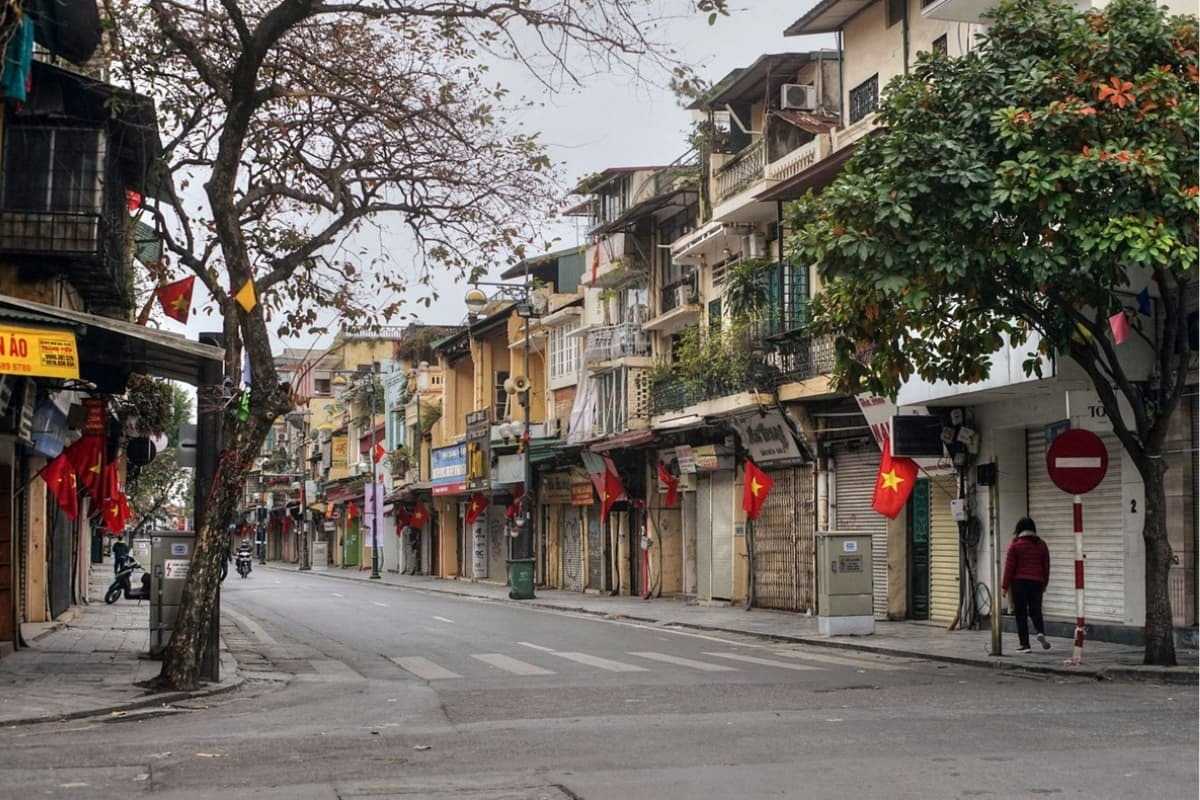
Culinary Experiences
The Hanoi Old Quarter is a food lover’s paradise, offering a rich tapestry of flavors that reflect Vietnamese culinary traditions. From bustling street food stalls to cozy cafés, the district invites you to taste authentic dishes and unique beverages. Sampling local favorites and exploring diverse dining options enriches your visit and connects you with the vibrant food culture that defines the Hanoi Old Quarter.
Delight your senses with the culinary treasures found throughout the Hanoi Old Quarter.
Street food sampling
Sampling street food is an essential experience in the Hanoi Old Quarter. Popular dishes to try include:
- Pho: Traditional Vietnamese noodle soup with rich broth and fresh herbs
- Banh Mi: Crispy baguette sandwiches filled with savory meats and vegetables
- Egg Coffee (Ca Phe Trung): Creamy coffee topped with whipped egg yolk foam
- Grilled skewers: Marinated meats and vegetables cooked over open flames
These iconic street foods offer authentic local flavors in a lively, casual setting.
Explore the best street food stalls in the Hanoi Old Quarter for unforgettable tastes.
Recommended local dishes and drinks
Certain dishes and drinks are must-tries when visiting the Hanoi Old Quarter:
- Bun Cha: Grilled pork served with rice noodles and fresh herbs
- Ca Phe Trung: Unique egg coffee, a Hanoi specialty
- Traditional Vietnamese coffee brewed strong and sweetened with condensed milk
These traditional recipes showcase the depth of Vietnamese culinary heritage and street beverage culture.
Savor these recommended dishes and drinks to experience the true flavors of the Hanoi Old Quarter.
Popular cafes and traditional eateries
Beyond street food, the Hanoi Old Quarter offers many cafés and restaurants known for their authentic atmosphere and cuisine:
- Notable cafés serving traditional Vietnamese coffee and snacks
- Family-run eateries with recipes passed down for generations
- Venues featuring cozy ambiance ideal for relaxing after sightseeing
These spots provide a deeper dive into Hanoi’s dining culture and offer comfortable settings to enjoy your meals.
Visit popular cafés and eateries in the Hanoi Old Quarter for a well-rounded culinary journey.

Shopping and Souvenirs
Shopping in the Hanoi Old Quarter offers a wonderful mix of traditional crafts and modern boutiques, perfect for finding unique gifts and keepsakes that capture the spirit of Hanoi. Whether you’re drawn to handmade artisan products or contemporary souvenirs, the district’s markets and shops provide a rich variety of options to suit every taste and budget.
Discover where to shop in the Hanoi Old Quarter for authentic crafts and memorable souvenirs.
Traditional crafts and artworks
The Hanoi Old Quarter is renowned for its artisan crafts, many of which carry deep cultural significance. Popular traditional crafts include:
- Silk products woven using centuries-old techniques
- Lacquerware items featuring intricate designs and durable finishes
- Ceramics crafted by skilled potters reflecting local heritage
These handmade goods represent the rich craft traditions and cultural heritage of the area.
Explore artisan workshops and markets to find authentic traditional crafts in the Hanoi Old Quarter.
Modern boutiques and souvenir shops
Alongside traditional markets, the Hanoi Old Quarter features modern boutiques and souvenir shops offering a wide range of products:
- Stylish gift shops selling contemporary Vietnamese-themed souvenirs
- Boutiques featuring handmade jewelry, textiles, and artwork
- Popular shopping streets like Hang Bac and Hang Dao with varied retail options
These venues complement traditional crafts, providing diverse shopping experiences for visitors.
Visit these shops and boutiques to enjoy a modern take on Hanoi Old Quarter shopping.

Nightlife and Entertainment
The Hanoi Old Quarter comes alive after dark with a vibrant nightlife scene full of night markets and cultural performances. Evening activities offer a mix of shopping, dining, and entertainment that showcase the district’s lively spirit. Whether you want to browse local crafts, savor street food, or enjoy traditional music and dance, the Old Quarter’s nightlife promises engaging experiences in a safe and welcoming atmosphere.
Plan your evenings in the Hanoi Old Quarter to experience its dynamic night markets and live cultural shows.
Night markets
Popular night markets in the Hanoi Old Quarter provide a bustling atmosphere for evening shopping and snacking. Key highlights include:
- Stalls selling souvenirs, clothing, and handmade crafts
- Wide variety of street food options to sample authentic Vietnamese flavors
- Lively ambiance with local vendors and friendly crowds
- Best times to visit to avoid peak congestion
These markets are perfect for leisurely nighttime exploration and cultural immersion.
Explore the vibrant night markets of the Hanoi Old Quarter for unique shopping and tasting adventures.
Live performances and street shows
The Old Quarter offers numerous live performances and street shows that highlight Vietnamese cultural heritage:
- Traditional music and folk dance performances in open-air venues
- Puppet shows, including water puppetry, reflecting local storytelling traditions
- Street artists and musicians creating an engaging cultural atmosphere
- Opportunities to watch and participate in festive events and celebrations
These cultural entertainments add depth and excitement to your visit.
Enjoy authentic live performances and street shows when visiting the Hanoi Old Quarter at night.

Nearby Attractions and Excursions
The Hanoi Old Quarter is perfectly located near several significant landmarks and cultural sites, making it an ideal base for exploring the city’s heritage beyond its bustling streets. From the serene Hoan Kiem Lake and Ngoc Son Temple to the historic Thang Long Imperial Citadel, visitors can easily extend their itineraries to include these enriching nearby attractions. Excursions also include the elegant Hanoi Opera House, the scholarly Temple of Literature, and a variety of day trips that showcase the wider region’s traditions and landscapes.
Expand your visit by exploring the fascinating nearby attractions around the Hanoi Old Quarter.

Hoan Kiem Lake and Ngoc Son Temple
Hoan Kiem Lake Hanoi is the cultural heart of the city, surrounded by scenic walkways and historic sites. At the lake’s center, Ngoc Son Temple sits on a small island accessible via a red wooden bridge. Key features include:
- Picturesque views popular for morning walks and photography
- The Turtle Tower, a symbol of Hanoi’s legends
- Cultural events and traditional ceremonies hosted at the temple
- Tips on best times to visit to avoid crowds
This landmark offers a peaceful retreat within walking distance of the Hanoi Old Quarter.
Don’t miss the chance to visit Hoan Kiem Lake and Ngoc Son Temple for a glimpse into Hanoi’s cultural soul.

Thang Long Imperial Citadel
The Thang Long Imperial Citadel is a UNESCO World Heritage site showcasing ancient ruins and archaeological treasures. Highlights include:
- Historic remains dating back to the Ly Dynasty and later periods
- Exhibition areas displaying artifacts from centuries of imperial rule
- Guided tours explaining the citadel’s political and cultural significance
- Visitor facilities and ticketing information
This site offers a deep dive into Vietnam’s imperial history, just minutes from the Hanoi Old Quarter.
Include the Thang Long Imperial Citadel in your itinerary to explore Hanoi’s ancient heritage.

Hanoi Opera House
The Hanoi Opera House is a stunning example of French colonial architecture and a hub for cultural performances. Features include:
- Elegant façade modeled after the Palais Garnier in Paris
- Regular schedule of opera, ballet, classical music, and traditional Vietnamese performances
- Guided tours of the building’s history and design
- Ticketing details and event calendar
Visiting the Hanoi Opera House adds an artistic and architectural dimension to your Hanoi experience.
Plan to attend a show or tour the Hanoi Opera House during your stay.

Temple of Literature
The Temple of Literature is Vietnam’s first national university and a key cultural site near the Old Quarter. Visitors can explore:
- Beautiful courtyards, traditional pavilions, and stone stelae
- Exhibits on Confucian philosophy and scholarly traditions
- The tranquil setting ideal for cultural reflection
- Practical information on opening hours and entry fees
This temple embodies Vietnam’s educational heritage and offers a serene contrast to the lively streets nearby.
Discover the scholarly traditions at the Temple of Literature on your Hanoi trip.

Day trips and cultural excursions from the Old Quarter
For travelers wanting to explore beyond the city, there are numerous day trips and cultural excursions starting from the Hanoi Old Quarter. Popular options include:
- Visits to traditional villages preserving crafts and rural lifestyles
- Guided tours to nearby natural parks and lakes
- Cultural excursions featuring local cuisine and festivals
- Convenient transport and tour package information
Extending your itinerary with these trips enriches your understanding of northern Vietnam’s diverse culture and landscapes.
Plan day trips from the Hanoi Old Quarter to explore the region’s hidden gems.

Insider Tips and Recommendations
Visiting the Hanoi Old Quarter is a vibrant experience, and knowing insider tips can help you navigate crowds, stay safe, and engage positively with locals. Responsible travel practices also enhance your visit while supporting the community. Discover lesser-known spots that reveal hidden sides of this historic district, making your trip more authentic and memorable.
Use these practical tips to make the most of your time in the Hanoi Old Quarter.

Navigating Crowds and Traffic
The narrow streets of the Hanoi Old Quarter often get crowded, especially during peak hours. To move safely and comfortably:
- Walk with awareness and patience to navigate pedestrian traffic
- Avoid peak traffic times if possible, especially during rush hours
- Use designated crosswalks and be cautious of motorbike traffic
- Consider exploring early mornings or late evenings for quieter streets
Managing crowds effectively helps you enjoy the district’s charm without stress.
Plan your visit to avoid busy times and move confidently through the Hanoi Old Quarter.

Safety and Travel Precautions
Staying safe in the Hanoi Old Quarter requires some simple precautions:
- Keep personal belongings secure to prevent pickpocketing
- Stay alert in crowded market areas and on busy streets
- Know emergency contact numbers and nearby medical facilities
- Follow local health guidelines and avoid unsafe food or water sources
Being prepared ensures a safe and pleasant visit in the bustling Old Quarter.
Follow these safety tips to protect yourself while exploring the Hanoi Old Quarter.

Interacting with Local Vendors and Residents
Positive engagement with locals enriches your experience. Remember to:
- Practice polite bargaining in markets, respecting vendor customs
- Use friendly greetings and basic Vietnamese phrases when possible
- Be patient and open-minded when negotiating prices or services
- Respect cultural norms and personal space to build goodwill
Good communication fosters mutual respect and enhances cultural exchange.
Interact respectfully with locals to deepen your connection to the Hanoi Old Quarter.

Sustainable and Responsible Tourism Practices
Supporting sustainable tourism protects the Hanoi Old Quarter’s heritage:
- Avoid littering and use designated trash bins
- Support local businesses and artisan crafts
- Choose eco-friendly transportation methods like walking or cycling
- Respect historic sites and avoid damaging fragile structures
Your responsible behavior helps preserve the district for future visitors.
Adopt sustainable travel practices to contribute positively to the Hanoi Old Quarter community.

Unique, Lesser-Known Spots in the Old Quarter
Beyond popular landmarks, the Hanoi Old Quarter has hidden gems worth exploring:
- Quaint alleys with street art and local cafés
- Small galleries showcasing emerging Vietnamese artists
- Quiet temples and pagodas away from main tourist paths
- Traditional craft workshops offering hands-on experiences
These off-the-beaten-path locations reveal the district’s authentic charm.
Discover lesser-known spots to enjoy a unique and enriching visit to the Hanoi Old Quarter.

Conclusion and Final Travel Advice
Visiting the Hanoi Old Quarter offers a unique blend of history, culture, and vibrant city life. To fully enjoy your trip, focus on key landmarks, practical tips, and respectful travel habits. This guide helps you leave with lasting memories while supporting the preservation of this treasured district.
Make the most of your visit to the Hanoi Old Quarter by planning thoughtfully and embracing its rich heritage.

Summary of Must-See Highlights
When exploring the Hanoi Old Quarter, don’t miss these essential sites:
- The historic streets showcasing traditional architecture and bustling markets
- Iconic landmarks such as Hoan Kiem Lake and Ngoc Son Temple
- Cultural centers like the Thang Long Water Puppet Theater
- Spiritual sites including Bach Ma Temple and Quan Thanh Temple
These highlights provide a well-rounded experience of the district’s history and vibrant culture.
Prioritize these must-see highlights to capture the true spirit of the Hanoi Old Quarter.

How to Maximize Your Visit
To enhance your trip to the Hanoi Old Quarter, consider these tips:
- Start early to avoid crowds and enjoy cooler temperatures
- Use guided or self-guided walking tours to explore at your own pace
- Sample street food and visit local craft shops for authentic experiences
- Respect local customs and plan rest breaks to stay comfortable
These strategies help you enjoy every moment while navigating the lively streets.
Follow these tips to maximize your visit to the Hanoi Old Quarter with ease and enjoyment.

Encouraging Cultural Respect and Preservation
Respecting the culture and supporting preservation is key to sustaining the Hanoi Old Quarter:
- Dispose of waste properly and avoid littering in public areas
- Support local artisans and businesses through responsible shopping
- Follow guidelines at historic and religious sites to protect their integrity
- Practice courteous behavior to foster positive interactions with residents
Your mindful actions contribute to the district’s continued cultural richness.
Embrace cultural respect to help preserve the unique heritage of the Hanoi Old Quarter for generations to come.
Mike Nguyen
Travel Advisor
Mobile: +84917506881 (whatsapp available)
Email: contact@asiatravellinks.com
Faqs
The Hanoi Old Quarter is renowned for its vibrant streets, rich cultural heritage, and historic architecture. It is a bustling district where traditional trades and artisan crafts flourish alongside lively markets and street food stalls. Visitors experience an authentic blend of Vietnamese history and daily life.
- Narrow, bustling streets filled with shops and markets
- Traditional tube houses and colonial architecture
- A center for Vietnamese culture, crafts, and cuisine
- Home to important temples, pagodas, and cultural landmarks
- Popular for walking tours and immersive local experiences
The Hanoi Old Quarter offers a unique window into Vietnam’s past and present, making it a must-visit for travelers seeking culture and history. Plan your visit to explore its lively streets and historic charm.
Reaching the Hanoi Old Quarter from Noi Bai International Airport is straightforward with several transportation options catering to different budgets and preferences. The journey typically takes 30 to 45 minutes depending on traffic.
- Taxi or ride-hailing apps offer convenient door-to-door service
- Airport shuttle buses connect to central Hanoi at affordable rates
- Private car transfers can be booked for comfort and reliability
- Public buses run regular routes but may require transfers and patience
- Ensure to agree on fares upfront or use metered taxis to avoid overcharging
Choosing the right transport option will depend on your schedule and budget. Contact Asia Travel Links for assistance in arranging your airport transfer to the Hanoi Old Quarter for a smooth start to your trip.
Access to the Hanoi Old Quarter streets and public areas is free of charge, allowing visitors to explore at their leisure. However, some museums, temples, and cultural sites within or near the district charge entry fees.
- Walking and shopping in the district are generally free
- Popular attractions like Bach Ma Temple and museums have ticket prices
- Fees vary but are usually affordable and support maintenance and preservation
- Some events or performances may require separate admission
- Check official sites or local guides for up-to-date pricing information
Knowing the entry costs ahead helps plan your budget effectively. Take time to enjoy both the open streets and the paid cultural experiences in the Hanoi Old Quarter.
The best time to visit the Hanoi Old Quarter is during the cooler, dry months from October to April. This period offers pleasant weather for exploring the district comfortably and enjoying outdoor activities.
- October to April features mild temperatures and less rain
- Avoid peak summer months when humidity and heat are high
- Festivals like Tet Lunar New Year add cultural richness but can be crowded
- Early mornings and late afternoons are ideal for walking tours
- Shoulder seasons provide fewer tourists and better accommodation deals
Choosing the right time enhances your experience of the Hanoi Old Quarter’s sights and sounds. Plan your trip to match weather and festival schedules for a memorable visit.



